-
WSDottie
AskWoody LoungerApplication.CurrentProject.Path will give the full path to your database
Application.CurrentProject.FullName will give the full path including the filename of the .mdb file
CurDir() will give the path to the default database folder as set on Tools –> Options –> General within Access -
WSDottie
AskWoody LoungerIn the query behind the Cities combobox add a column for the State with a criteria that the State would equal the value of the States combobox. So the criteria would look something like this for the State field: Forms!frmCityStateSelect!cboState. Then in the after_update event for the State combobox you would requery the City combobox: Me!cboCity.Requery
-
WSDottie
AskWoody LoungerThanks very much! The Help file is legible again thanks to you. Following the Help topic you pointed me to, I set the Internet options, Accessibility, to “ignore font sizes specified on Web pages.” This affects the way Web pages appear too, but so far so good.
-
WSDottie
AskWoody LoungerJuly 25, 2002 at 2:50 am in reply to: Date() function not working between computers (Access 2000) #603811Hi Sue,
It is possible that there is a “broken” reference to a library on one of the machines. On the machine that is giving you grief, go into the VB editor in Access and choose Tools –> references from the menu. If any of the checked references have a MISSING next to their name, you will have to fix it. Sometimes the paths to the referenced libraries vary from one machine to the next. Look at the references on the “good” machine too and see what file they actually point to (as you highlight each reference it shows the location at the bottom of the dialog box). This should help you find the same file on the troubled machine and reset the reference. It even happens sometimes that the references look to be good, show no “MISSING” ones, yet unchecking and rechecking them does some magical fix that lets them function properly again; always worth a try.
-
WSDottie
AskWoody LoungerHi Mike,
Yes, that is the way QueryUnload is supposed to work. It has an UnloadMode parameter that you can check to see why the whether the form is about to be unloaded: due to code, the user clicking the X (control box), Windows shutting down, or the Task Manager End Task. You can set the Cancel parameter to True to prevent unloading if the mode is not the graceful exit you want. I’m just not sure if Citrix shutting the application down on a timeout will be treated the same way as End Task or Windows shutdown. -
WSDottie
AskWoody LoungerMike, Have you tried putting the logout code in the QueryUnload event? That event will run even if the App is closing because of Windows shutting down, so maybe it will run if the reason for closing is a Citrix timeout.
-
WSDottie
AskWoody LoungerSELECT * FROM tblTable WHERE fieldname IS NULL
-
WSDottie
AskWoody LoungerCan you use the TypeName function here?
For each ctl…..
If TypeName(ctl) = “ComboBox” then…. -
WSDottie
AskWoody LoungerJuly 12, 2002 at 1:16 am in reply to: AutoExec Macro – enough to drive a person insane! (EN / MS Word 97) #600646It is pretty odd! The shortcut runs OSA.EXE the Office Startup Application. There is some info at: http://support.microsoft.com/default.aspx?…b;en-us;Q165071 They say it initializes automation and code that is shared by the Office applications so that the applications start faster. Maybe there is some quirk in there that makes it bypass the global macros.
-
WSDottie
AskWoody LoungerJuly 10, 2002 at 2:27 am in reply to: Switch References on and off with code (Acc 97 sr2 on 95b) #600145Hi Allen, You can add and remove references through code by using the AddFromCode and Remove methods of the References collection. In Access Help Index look for the topic “References Collection”; it gives coding examples. But if the references are needed for the project that you are going to distribute as an MDE wouldn’t they need to be toggled on at the time you build the MDE? I probably am not understanding what you want to. Each Reference also has a property named Builtin that is True if it is needed for Access to function properly, so you’ll need to always keep those set. Here’s some code you can try just to see what references are currently set, whether they are built-in, and if any are broken.
Dim refx As Reference
For Each refx In Application.References
MsgBox refx.Name & “: ” & refx.FullPath & vbCrLf & _
“Major : ” & refx.Major & ” Minor: ” & refx.Minor & vbCrLf _
& “Builtin: ” & refx.BuiltIn & ” Kind: ” & refx.KindIf refx.IsBroken Then
MsgBox refx.Name & ” is broken!”
End IfNext refx
-
WSDottie
AskWoody LoungerWe had a similar problem in which on some workstations the user was prompted to enter a password for the machine on which the shortcut was created; your problem might have the same root cause which is that the UNC path is embedded in the .lnk shortcut file and instead of resolving to the local relative path as it appears when you look at shortcut properties it resolves to the UNC path. In our case we were using C:microsoft…msaccess.exe…. in front of the path to the mdb file. On some machines it read C: as the originating workstation’s network name thus causing the prompt for password. This led us to find the following Knowledge Base articles and related links. It has something to do with which version of shell32.dll the user has. I believe in one of the articles it mentions that you can open the .lnk file in Notepad and see the full embedded path.
http://support.microsoft.com/default.aspx?…b;en-us;Q150215 and http://support.microsoft.com/search/previe…b;en-us;Q158682 -
WSDottie
AskWoody LoungerMike, I think what you want is DELETE FROM, omitting the *.
-
WSDottie
AskWoody LoungerRoger,
Sorry, I just realized I had some of the syntax wrong in what I just posted. I have been doing more VB than Access/VBA and was mixing things up a bit! In Access when you are referring to another form by name you have to use Forms! in front of the name, e.g. Forms!frmApple.XYZ, the Forms collection will only contain forms that are currently loaded, even if not visible. Probably some of the other people in this forum will have better ideas on which is preferable in this situation: a global variable in a module, or a public form-level variable in a form that stays loaded. Sorry for the error. -
WSDottie
AskWoody LoungerIncluding the Dim statement inside the apple_click procedure makes it local to that procedure only. Since you need XYZ to be available throughout the application once the user sets its value, you can either declare XYZ as a Public variable in a separate module (making it global) or declare it as a Public variable within your form and keep the form loaded (but not visible) at all times. Public variables on a form need to be declared in the General Declarations section rather than within a Sub and will need to be prefixed with the form’s name when referenced from another form. e.g. txtValue.text = frmApple.XYZ. Using the form to hold the variable (rather than a global in a separate module) allows you to limit where and how the value of the public variable gets changed.
-
WSDottie
AskWoody LoungerSometimes even though your event procedures are correctly named to match the name of your control and its event, a disconnect somehow occurs. For your btnViewAmendments command button, if you look at the events tab of its properties window, does it show that there is code for the Click event or not? If not, you just have to click next to the event name in the property list as if you were going to enter new code and that should hook it back up correctly.

|
Patch reliability is unclear, but widespread attacks make patching prudent. Go ahead and patch, but watch out for potential problems. |
| SIGN IN | Not a member? | REGISTER | PLUS MEMBERSHIP |

Plus Membership
Donations from Plus members keep this site going. You can identify the people who support AskWoody by the Plus badge on their avatars.
AskWoody Plus members not only get access to all of the contents of this site -- including Susan Bradley's frequently updated Patch Watch listing -- they also receive weekly AskWoody Plus Newsletters (formerly Windows Secrets Newsletter) and AskWoody Plus Alerts, emails when there are important breaking developments.
Get Plus!
Welcome to our unique respite from the madness.
It's easy to post questions about Windows 11, Windows 10, Win8.1, Win7, Surface, Office, or browse through our Forums. Post anonymously or register for greater privileges. Keep it civil, please: Decorous Lounge rules strictly enforced. Questions? Contact Customer Support.
Search Newsletters
Search Forums
View the Forum
Search for Topics
Recent Topics
-
24H2 Installer – don’t see ption for non distructive install
by
JP
4 hours, 23 minutes ago -
Asking Again here (New User and Fast change only backups)
by
thymej
10 hours, 35 minutes ago -
How much I spent on the Mac mini
by
Will Fastie
1 minute ago -
How to get rid of Copilot in Microsoft 365
by
Lance Whitney
2 hours, 23 minutes ago -
Spring cleanup — 2025
by
Deanna McElveen
16 hours, 27 minutes ago -
Setting up Windows 11
by
Susan Bradley
2 minutes ago -
VLC Introduces Cutting-Edge AI Subtitling and Translation Capabilities
by
Alex5723
11 hours, 54 minutes ago -
Powershell version?
by
CWBillow
12 hours, 47 minutes ago -
SendTom Toys
by
CWBillow
7 hours, 27 minutes ago -
Add shortcut to taskbar?
by
CWBillow
16 hours, 43 minutes ago -
Sycophancy in GPT-4o: What happened
by
Alex5723
1 day, 9 hours ago -
How can I install Skype on Windows 7?
by
Help
1 day, 7 hours ago -
Logitech MK850 Keyboard issues
by
Rush2112
14 hours, 43 minutes ago -
We live in a simulation
by
Alex5723
1 day, 23 hours ago -
Netplwiz not working
by
RetiredGeek
1 day, 9 hours ago -
Windows 11 24H2 is broadly available
by
Alex5723
2 days, 11 hours ago -
Microsoft is killing Authenticator
by
Alex5723
23 hours, 16 minutes ago -
Downloads folder location
by
CWBillow
2 days, 18 hours ago -
Remove a User from Login screen
by
CWBillow
1 day, 13 hours ago -
TikTok fined €530 million for sending European user data to China
by
Nibbled To Death By Ducks
2 days, 9 hours ago -
Microsoft Speech Recognition Service Error Code 1002
by
stanhutchings
2 days, 9 hours ago -
Is it a bug or is it expected?
by
Susan Bradley
11 hours, 21 minutes ago -
Image for Windows TBwinRE image not enough space on target location
by
bobolink
2 days, 8 hours ago -
Start menu jump lists for some apps might not work as expected on Windows 10
by
Susan Bradley
1 day, 7 hours ago -
Malicious Go Modules disk-wiping malware
by
Alex5723
2 days, 22 hours ago -
Multiple Partitions?
by
CWBillow
2 days, 22 hours ago -
World Passkey Day 2025
by
Alex5723
18 hours, 54 minutes ago -
Add serial device in Windows 11
by
Theodore Dawson
4 days, 7 hours ago -
Windows 11 users reportedly losing data due forced BitLocker encryption
by
Alex5723
2 days, 8 hours ago -
Cached credentials is not a new bug
by
Susan Bradley
4 days, 11 hours ago
Recent blog posts
Key Links
Want to Advertise in the free newsletter? How about a gift subscription in honor of a birthday? Send an email to sb@askwoody.com to ask how.
Mastodon profile for DefConPatch
Mastodon profile for AskWoody
Home • About • FAQ • Posts & Privacy • Forums • My Account
Register • Free Newsletter • Plus Membership • Gift Certificates • MS-DEFCON Alerts
Copyright ©2004-2025 by AskWoody Tech LLC. All Rights Reserved.
